To the average eye, oysters are often regarded as unremarkable, humble, even unappealing to look at. However, these meager creatures play an essential role to water health and could significantly reduce nitrogen pollution in rivers if their population growth was encouraged and sustained.
According to a joint study in 2014 regarding pollution in the Potomac River, oyster aquaculture in the river estuary could result in significant improvements to water quality by removing all of the nitrogen polluting the river. The study determined that a combination of aquaculture and restored oyster reefs may provide even greater ecosystem benefits.
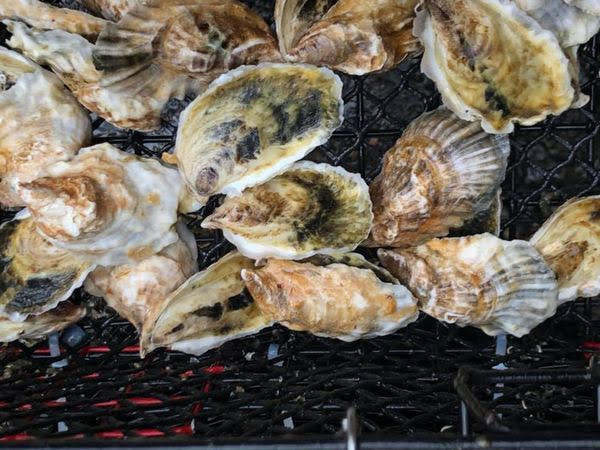
Sunset Beach Aquaculture harvests two types of oysters: free range and cultured. Photo courtesy of Sunset Beach Aquaculture.
Adding to the benefits is how widely regarded oysters are as a tasty seafood delicacy. With all of the possibilities these shellfish bring to mind, cultivators like Sunset Beach Aquaculture are important players in the game of water quality.
Established in 2012, Sunset Beach Aquaculture is a family-run business that harvests a fresh selection of organic local oysters while also maintaining a community lifestyle of sustainability. They have developed programs that allow all their aquaculture to be used as tools for research and understanding of ocean sustainability and conservation of aquaculture, while also educating the community.
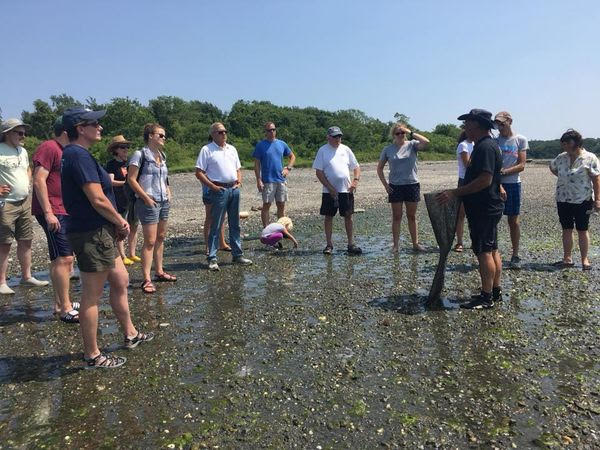
Sunset Beach staff members lead a tour for the public to experience their lifestyle and be immersed by ocean life. Photo courtesy of Sunset Beach Aquaculture.
Oysters are natural filter feeders, and a single oyster can filter more than 50 gallons of water in one day. They do this by pumping water through their gills, trapping particles of food as well as suspended sediments and chemical contaminants. By doing this, they help keep the water clean and clear for underwater grasses and other surrounding marine life.
What possibilities are packed in the shells of these miniscule waterside animals? Kinute caught up with Sunset Beach owner and operator Tony Pinheiro to discuss oysters’ roles in ocean sustainability, the difference between free range and cultured oysters and more.
Tell us about Sunset Beach Aquaculture and its sustainability and community practices. What led you to establish this unique family-run business?
We lease a small shallow water site on the southwest side of Jamestown, Rhode Island, at the mouth of a freshwater brook in Narragansett Bay. It’s about 1.5 miles from the Atlantic Ocean, which makes our product unique.
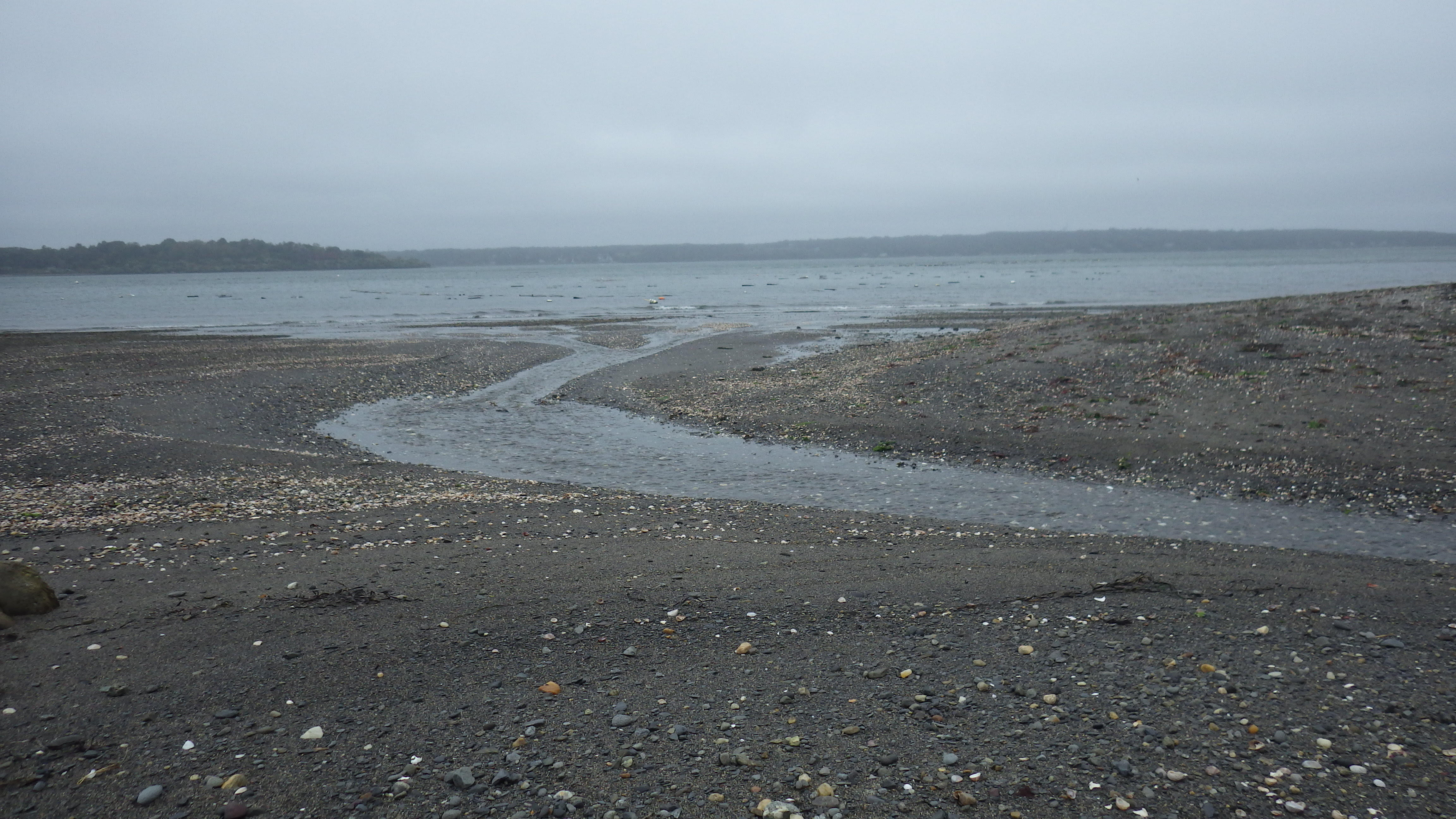
Sunset Beach Aquaculture harvests at a shallow water site in Jamestown, Rhode Island, which contains both fresh and seawater. Photo courtesy of Sunset Beach Aquaculture.
Having an influx of fresh and seawater, we grow oysters, clams, scallops, mussels and seaweed. We grow our oysters, clams and scallops from eggs that we buy from a hatchery. The mussels and seaweed grow naturally from spat that stick and grow on the gear (actually predators turned into marketable product).
Everything we grow has a neutral impact. They do not need processed food; the food is found in the aquatic environment (plankton).
For community practices, we have several methods we use to grow. One is floating gear, utilizing 5-inch-by-36 inch floats on a 6-by-3-foot cage bag and rack system that is unique in this area. Using this method allows us to flip the cages for drying, and is most favorable to the community. As far as floating gear goes, most other farms use large floats—12-inch-by-36-inch—which has been a major visibility concern in the aquaculture industry. This has worked for us in alleviating visibility concerns.
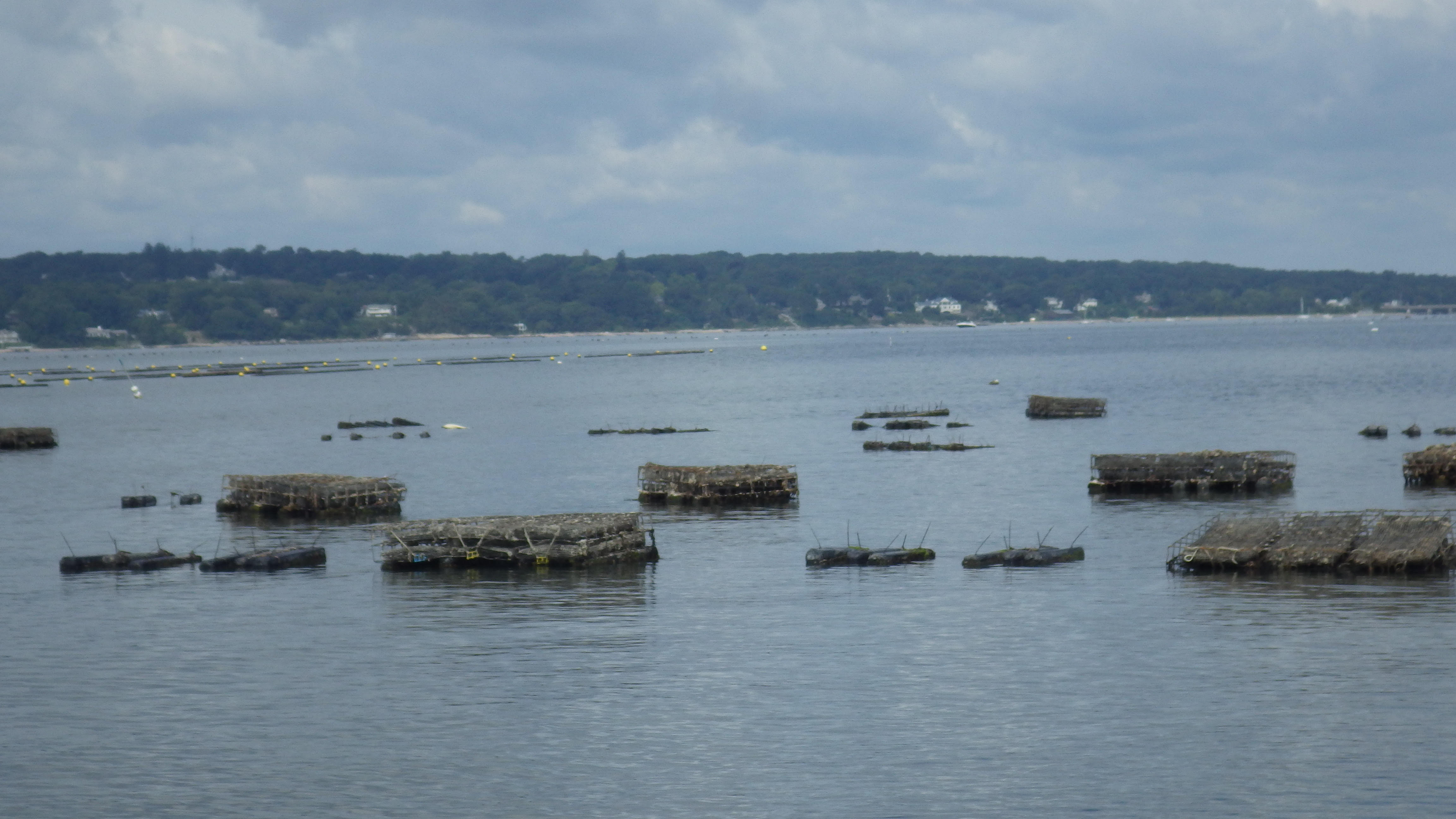
Sunset Beach uses a rack system to grow oysters sustainably. Photo courtesy of Sunset Beach Aquaculture.
We also use bottom cages (non-floating) similar to the floating method, but must be power-washed or removed for drying and cleaning. This method is favored by concerned public objectors, but is much more difficult for us.
We also utilize direct bottom planting, which is basically natural, wild-growing. Again, that is tough on the farmer, but most desired by objectors, as gear is not needed. We have built our area always keeping our neighbors and environmental concerns in mind.
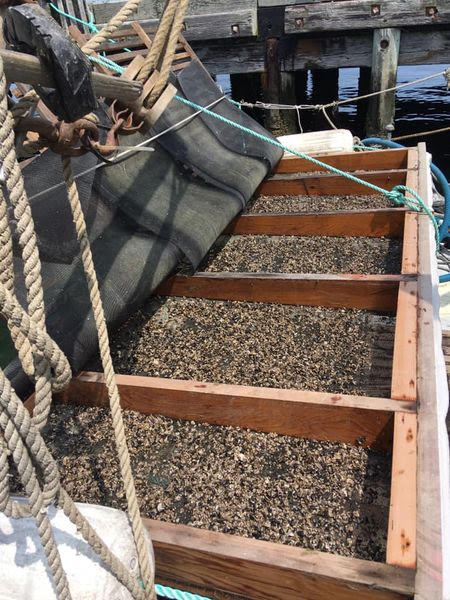 Racks used to collect oysters. Photo courtesy of Sunset Beach Aquaculture.
Racks used to collect oysters. Photo courtesy of Sunset Beach Aquaculture.
Why did you choose to work in aquaculture?
As a lifelong, part-time commercial fisherman and islander, I watched the bay and ocean turned into a virtual sub-terrain desert. Overfishing, pollution and malpractice had devastated the industry. I watched and studied aquaculture and its impact.
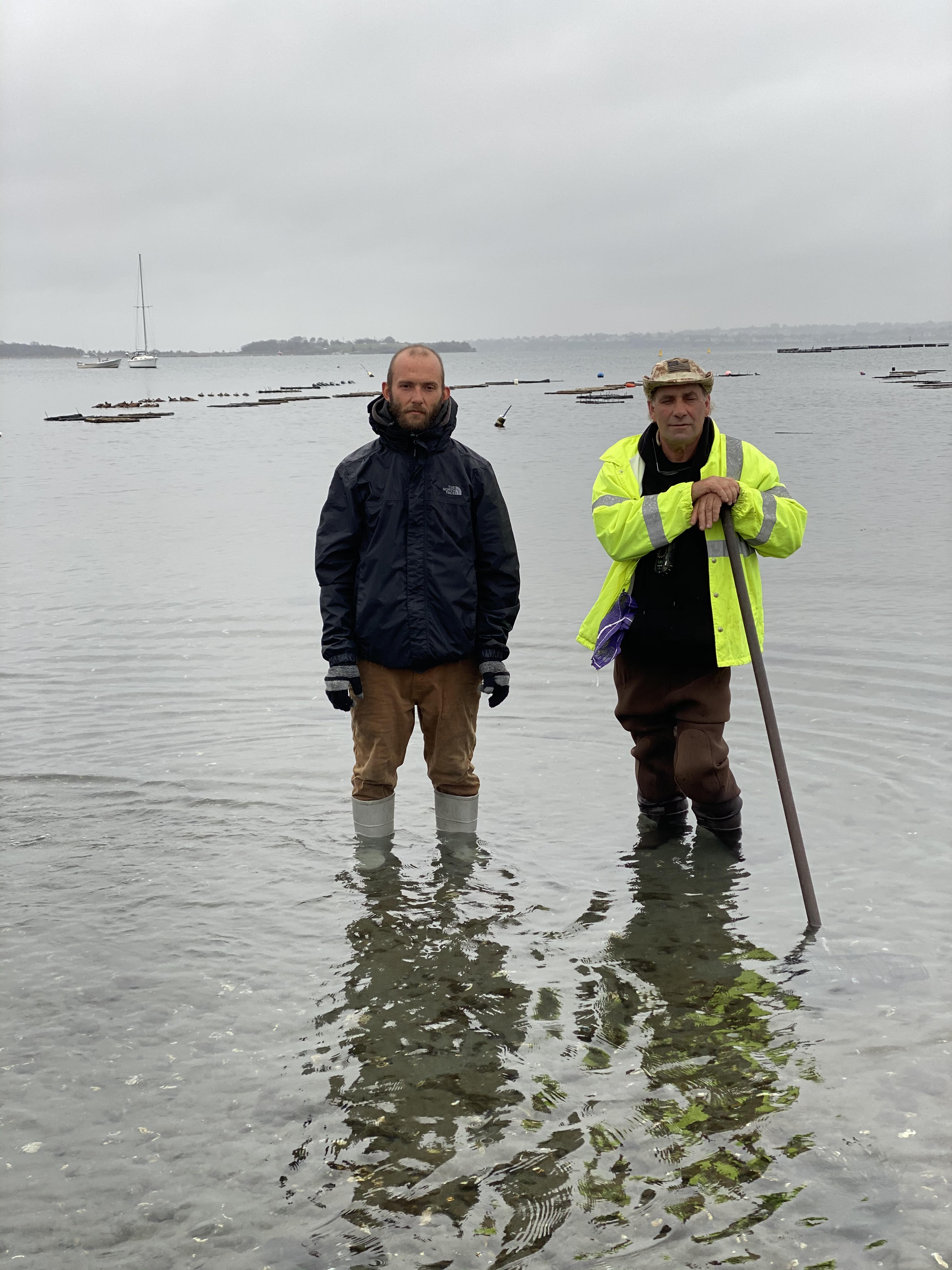
Sunset Beach Aquaculture team members tend to their aquaculture. Photo courtesy of Sunset Beach Aquaculture.
Aquaculture brings life back to our community and I decided to invest in it. Being a shallow water farm with land access, we have had lots of interest from local colleges and environmental groups who observe our methods. Everything we do is an experiment in the making, and we feel it is very important we share it with all interested parties. That way, they can have a better understanding of a sustainable, eco-friendly food-providing industry.
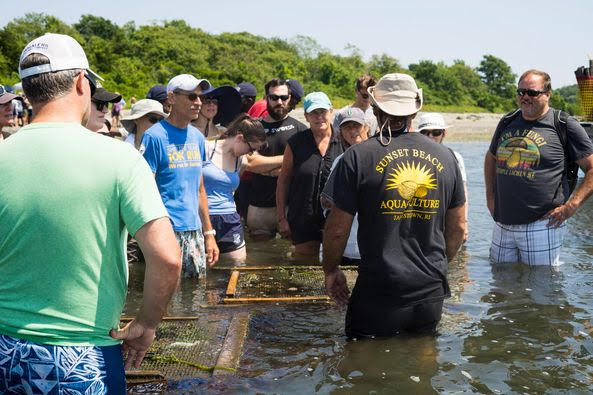
Staff members share their sustainable methods with community members. Photo courtesy of Sunset Beach Aquaculture.
What's the difference between free-range and cultured oysters? Is one better than the other?
We consider our directly-planted product free range, as it is most consistent with nature. The oysters are left to fend for themselves. They are very vulnerable to predators, such as conch crabs and sea birds, just to mention a few. Free range also means being on the bottom, where cooler water is maintained. This means the oysters have a much slower growing rate, but they create a much harder shell and meatier body, more like a wild, natural-grown oyster and/or clam.
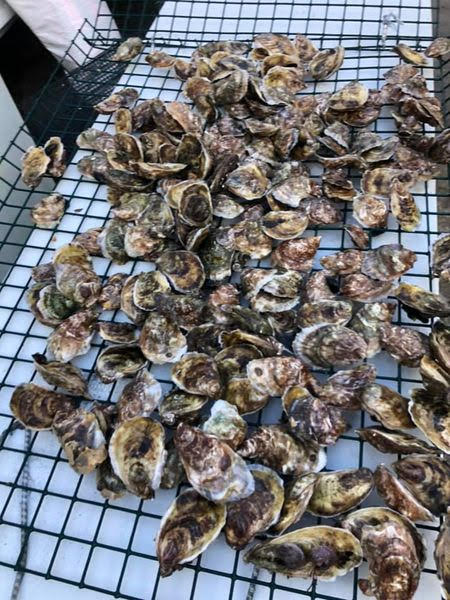
Free-range oysters may take longer to grow, but they end up with a much harder shell and meatier body than cultured ones. Photo courtesy of Sunset Beach Aquaculture.
The cultured products that are grown in large quantity and packed into bags are grown closer to the top, in warmer water. This means they will grow faster, resulting in a softer shell and less meat.
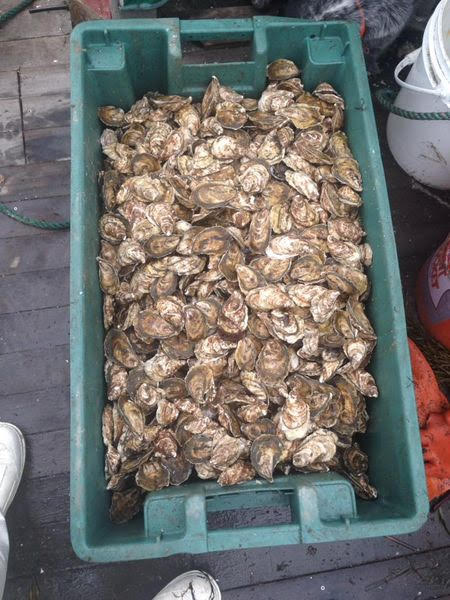
Cultured oysters may be grown in large quantities, and some consumers may prefer their consistency over the free-range. Photo courtesy of Sunset Beach Aquaculture.
As far as which is better, it all depends on the consumer. Some prefer more meat, some prefer less. As far as the shuckers go, the free range oysters have harder shells which tend not to break. That is usually preferred.
What other seafood do you offer? Which seasons are scallops and seaweed available?
Scallops are only available when nature allows. They are very vulnerable to the environment. We depend on natural [circumstances], and then they only survive a couple of years.
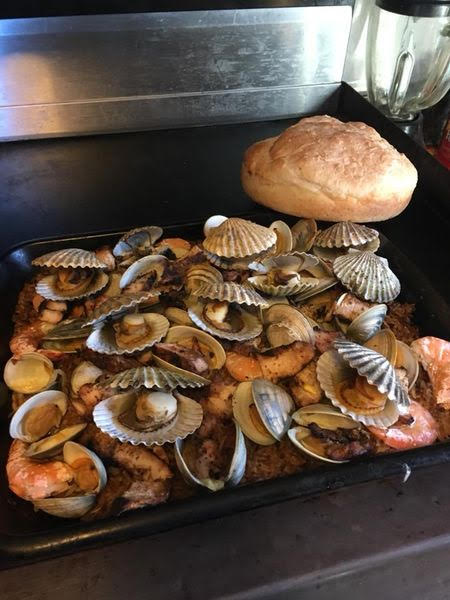
Scallop offerings are few and far in between due to vulnerability in their natural habitat, so Sunset Beach only offers them when the environment allows. Photo courtesy of Sunset Beach Aquaculture.
Our seaweed at this time is mostly experimental. We have natural seaweed that grows in the warm summer months and the kelp that gets planted will grow in winter.
LionHeart vessel boat rides sound very intriguing. What happens during one of these charter boat rides?
The LionHeart is a 75-foot yacht, and can accommodate a party up to 12 people. The LionHeart leaves from several locations around Jamestown. Full- or half-day charters will take you on an aqua-tour and throughout other destinations in Narragansett Bay and/or Block Island Sound.
Oysters, clams, lobster or shrimp can be served, depending on what package you prefer.
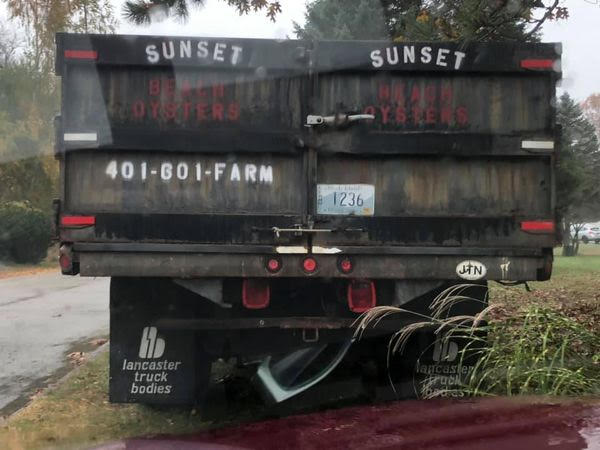
Photo courtesy of Sunset Beach Aquaculture.
Are there challenges from the community against oyster farming and if so why do you think that is so?
Most objections come from the waterfront community. The objections mostly the NIMBY (Not In My Backyard) theory.
What we mean by the NIMBY theory is people say, "We love aquaculture but just don't want it here."
